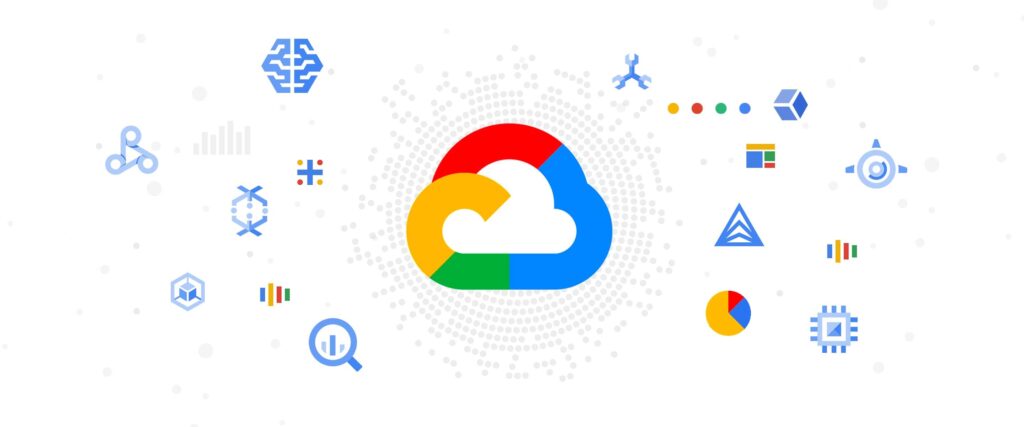Organizations need to make data-driven decisions quickly and accurately in today’s data-driven world. This requires a robust and scalable data warehouse system that can handle large volumes of data, complex queries, and multiple data sources. However, maintaining an on-premise data warehouse can be costly, time-consuming, and challenging to scale. Migrating to a cloud-based data warehouse system such as Google Cloud Platform (GCP) can help organizations reduce costs, improve performance, and scale their data warehouse system as needed.
Benefits of migrating a data warehouse to GCP
Cost Savings: Cloud-based data warehouse systems eliminate the need for on-premise hardware and maintenance costs. GCP offers a pay-as-you-go pricing model that allows organizations to pay only for what they use, resulting in cost savings.
Scalability: Cloud-based data warehouse systems can scale easily to handle large volumes of data and support multiple users and applications. GCP offers scalable storage and compute resources that can be adjusted based on business needs.
Performance: Cloud-based data warehouse systems can offer improved performance and faster query processing times compared to on-premise systems. GCP offers high-performance infrastructure and tools that can optimize query performance.
Flexibility: Cloud-based data warehouse systems can support multiple data sources and data types, allowing organizations to integrate and analyze data from various sources. GCP offers a range of data integration tools and connectors that can simplify data integration.
Security: Cloud-based data warehouse systems can provide improved security and compliance compared to on-premise systems. GCP offers robust security features, such as encryption, access controls, and monitoring tools, to protect sensitive data.
Planning for a Data Warehouse Migration to Google Cloud Platform
Migrating a data warehouse to Google Cloud Platform (GCP) requires a comprehensive assessment of the current system, potential risks, and challenges. This assessment will help organizations determine the feasibility of migrating to GCP and establish a migration plan that aligns with their business needs.
Analyzing the Current Data Warehouse System and Its Requirements
The first step in the assessment process is to analyze the current data warehouse system and its requirements. This involves understanding the current system’s data sources, data types, data volumes, and query patterns. Organizations should also identify any customizations or integrations that may impact the migration process.
This phase consists of the following tasks:
- Examine the value proposition of BigQuery and compare it to your legacy data warehouse.
- Perform an initial TCO analysis.
- Establish which use cases are affected by the migration.
- Model the characteristics of the underlying datasets and data pipelines you want to migrate in order to identify dependencies.
Determining the Feasibility of Migrating to Google Cloud Platform
Based on the analysis and risk assessment, organizations can determine the feasibility of migrating to GCP. This involves assessing whether GCP can meet its data warehouse requirements and align with its business goals. Organizations should consider factors such as GCP’s scalability, performance, security, and cost-effectiveness.
The planning phase is about taking the input from the preparation and discovery phase, assessing that input, and then using it to plan for the migration. This phase can be broken down into the following tasks:
- Catalog and prioritize use cases. Your catalog of both existing and new use cases and assign them a priority.
- Define measures of success. Your measures will allow you to assess the migration’s success at each iteration.
- Create a definition of “done”. Set minimum criteria for you to consider the use case to be fully migrated.
- Design and propose a proof-of-concept (POC), short-term state, and ideal end state. Consider the first use-case migration as a PoC to validate the initial migration approach. Consider what is achievable within the first few weeks to months as the short-term state.
- Create time and cost estimates. Engage all the relevant stakeholders to discuss their availability and agree on their level of engagement throughout the project.
Migration: Steps for a Smooth Data Warehouse Migration to Google Cloud Platform
Migrating a data warehouse to Google Cloud Platform (GCP) requires careful planning, testing, and execution to ensure a smooth transition. Here are the steps for a successful data warehouse migration to GCP:
1. Setup and data governance
Setup is the foundational work that’s required in order to enable the use cases to run on Google Cloud. Setup can include configuration of your Google Cloud projects, network, virtual private cloud (VPC), and data governance. The data governance documentation helps you understand data governance and the controls that you need when migrating your on-premises data warehouse to BigQuery.
2. Migrate schema and data
The data warehouse schema defines how your data is structured and defines the relationships between your data entities. The schema is at the core of your data design, and it influences many processes, both upstream and downstream. The schema and data transfer documentation provides extensive information on how you can move your data to BigQuery and recommendations for updating your schema to take full advantage of BigQuery’s features.
3. Translate queries
Use batch SQL translation to migrate your SQL code in bulk, or interactive SQL translation to translate ad hoc queries. Some legacy data warehouses include extensions to the SQL standard to enable functionality for their product. BigQuery does not support these proprietary extensions; instead, it conforms to the ANSI/ISO SQL:2011 standard. This means that some of your queries might still need manual refactoring if the SQL translators can’t interpret them.
4. Migrate business applications
Business applications can take many forms—from dashboards to custom applications to operational data pipelines that provide feedback loops to transactional systems.
5. Migrate data pipelines
The data pipelines documentation presents procedures, patterns, and technologies to migrate your legacy data pipelines to Google Cloud. It helps you understand what a data pipeline is, what procedures and patterns it can employ, and which migration options and technologies are available in relation to the larger data warehouse migration.
6. Optimize performance
BigQuery processes data efficiently for both small and petabyte-scale datasets. With the help of BigQuery, your data analytics jobs should perform well without modification in your newly migrated data warehouse. If you find that under certain circumstances query performance doesn’t match your expectations, see Introduction to optimizing query performance for guidance.
7. Verify and validate
At the end of each iteration, validate that the use-case migration was successful by verifying:
- The data and schema have been fully migrated.
- Data governance concerns have been fully met and tested.
- Maintenance and monitoring procedures and automation have been established.
- Queries have been correctly translated.
- Migrated data pipelines function as expected.
- Business applications are correctly configured to access the migrated data and queries.
Google Cloud Migration Type
Lift & Rehost
- Conservative approach
- Fast migration from existing services such as TD Vantage, and Databricks onto GCP
- No modernization or improving existing solutions apart from running them over GCP as a tactical intermediate decision.
Lift and Replatform
- Optimal phased approach, low disruption, low risk, and high impact.
- Migrate data into BQ from legacy EDW
- Migrate data into Dataproc from the on-premise Hadoop cluster
- Optimize queries and data pipelines for performance
- Up to 57% lower TCO than on-prem
Modernize
- All in on a cloud-native, clean break from the past
- Built natively on GCP
- Can be slower as it requires rewriting jobs
- Greatest development velocity and agility.
- 60-88% lower TCO than on-prem, plus value from Google AI on unstructured data
Challenges to Consider During Data Warehouse Migration to Google Cloud Platform
Migrating a data warehouse to Google Cloud Platform (GCP) can be a complex and challenging process. While the benefits of migrating to GCP are significant, there are several challenges that organizations must consider during the migration process:
Compatibility Issues: Compatibility issues can arise when migrating from an on-premises data warehouse to GCP. These issues can include differences in database versions, operating systems, and third-party software.
Data Quality: Ensuring data quality is critical to the success of a data warehouse migration. Organizations must verify that the data is accurate, complete, and meets the required standards.
Migration Downtime: During the migration process, the data warehouse may experience downtime, which can result in a loss of productivity and revenue.
Cost: Migrating to GCP can be expensive, especially if organizations need to purchase new hardware, software, and services to support the migration.
Security: Migrating sensitive data to GCP requires ensuring that the data is secure and meets the organization’s compliance and regulatory requirements.
Complexity: Migrating a data warehouse to GCP requires a deep understanding of the organization’s data and IT infrastructure, as well as GCP’s infrastructure and services.
User Acceptance: User acceptance is critical to the success of a data warehouse migration. Organizations must ensure that the new data warehouse system is user-friendly, easy to use, and meets the users’ needs.
Migrating data warehouse to Google Cloud Platform can be a complex process, but the benefits it provides are significant. By addressing the challenges of compatibility, organizations can ensure a successful migration to GCP. They can leverage the robust computing infrastructure and services provided by GCP to improve the performance of their data warehouse system, increase scalability, reduce costs, enhance security, and drive innovation. Migrating to GCP can help organizations gain insights from their data, make informed business decisions, and stay ahead of the competition in the rapidly evolving digital landscape.







